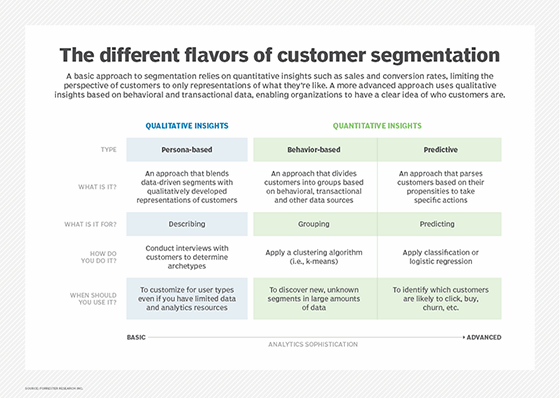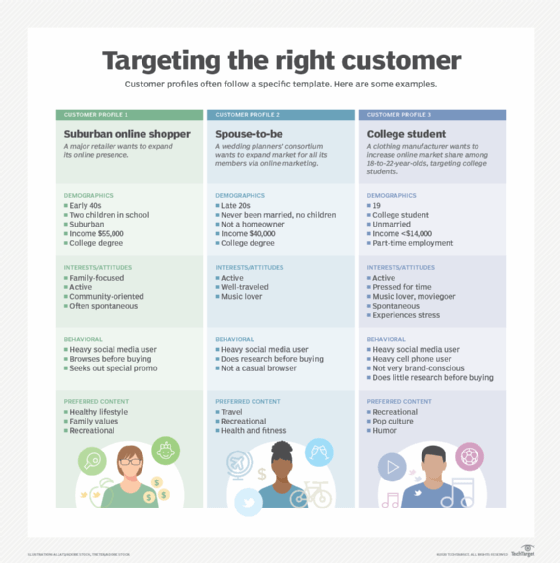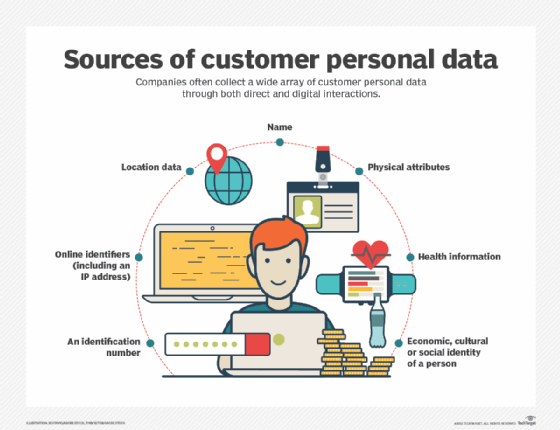customer demographics
What are customer demographics?
Customer demographics are categories of consumer populations that are useful to a business for purposes, such as marketing and product design. The term also refers to the study of such categories in a business context.
An endless number of variables can be used to categorize customers and potential customers. Some examples of the most common customer Demographics for business purposes include the following:
- age
- gender
- ethnicity
- geographic location
- household income level
- level of education
- marital status
- home ownership
- occupation
- employment status
- number of children in household
- hobbies
What is customer segmentation?
Demographics and demographic segmentation are a key element of customer segmentation, which involves profiles that are based on grouping people together who have similar demographic characteristics. Targeting specific groups of customers enables more efficient allocation of marketing resources and increases the opportunities for cross-selling and up-selling.
Customer segmentation enables more personalized interaction between a business and its customer base. It improves customer service and fosters customer loyalty and customer retention. Appropriately targeted marketing campaigns are typically more relevant to the customer's needs and more welcome.

Why analyze customer demographics?
Besides being used to improve marketing and customer service, a business might study consumer demographics to get a better understanding of who is using a product or other resource. For example, demographic information helps delineate the characteristics of a population in a particular neighborhood or the audience of a website. This approach is used to create demographic profiles of individual customers as well as groups of target customers.

Virtually any organization trying to sell products and services to a target audience uses market research to gather demographic data, market segmentation data and related statistical information to formulate its marketing strategy. This specific demographic information is essential when preparing messaging or promotional content to ensure that it reaches its target market and addresses specific metrics, such as age group and ethnic group.
Sources of customer demographic data
Social media is an important source of data on demographic characteristics. Using LinkedIn, Facebook and other social media sites, businesses can gather data on metrics, such as age group, educational background, geographic location and travel preferences, providing insight into the target audiences.
Other sources of demographic data include the following:
- S. Census Bureau
- S. Bureau of Labor Statistics
- Social Security Administration
- tax records
- search engines
The key to capturing data is to make sure that it reflects the true nature and behavior of prospective customers.

Demographics versus psychographics
Demographics is largely statistical data from specific metrics. Psychographics includes both objective statistical data and subjective, non-numerical data and information. It examines attitudes, aspirations, fears and other relevant psychological criteria.
Knowledge of both statistical and nonstatistical data provides a detailed view of existing and prospective customer profiles and their "hot buttons" or highly charged issues from various perspectives.
The idea behind psychographics is identifying and triggering relevant topics in marketing messages to customers. This approach is more of a psychological approach. The goal is to prepare a message that inspires customers to do something by appealing to one or more psychological attributes, such as greed, fear and the need for acceptance.
For example, television commercials often ask viewers if they use a product or service. The ad might make reference to the viewer's financial situation, such as having large credit card bills. If the viewer has credit card debt or can relate to that situation, with the accompanying anxiety and needing help to address the problem, the ad may elicit the psychological response and consumer behavior the advertiser is looking for. That is, the viewer calls the phone number provided or goes to a website, gets more information and becomes a customer.
Demographic data contributes to how a message is formulated, which markets are the best targets, the timing of message delivery and other criteria. In this context, both demographic and psychographic data complement each other, resulting in messages that go to the right audience with the most effective content.
Customer demographic data is also useful when trying to manage customer experience. Find out more about customer experience management.